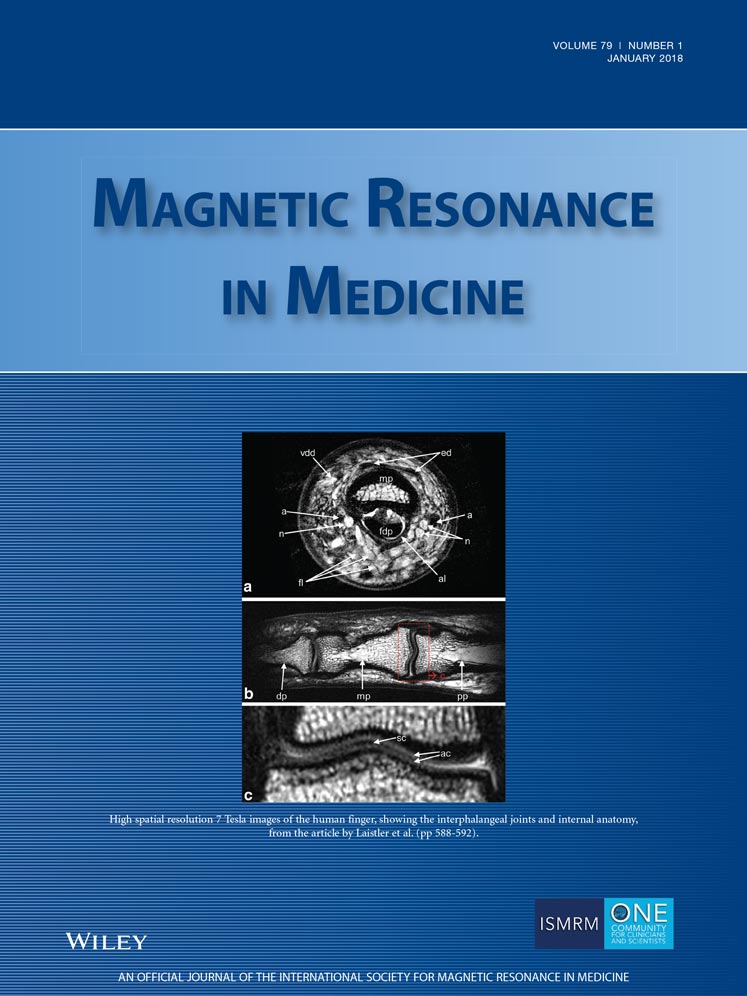Modeling real shim fields for very high degree (and order) B0 shimming of the human brain at 9.4 T
Correction added after online publication 31 July 2017. The authors have replaced Figure 8 to correct the scaling bar for the FWHM images.
Abstract
Purpose
To describe the process of calibrating a B0 shim system using high-degree (or high order) spherical harmonic models of the measured shim fields, to provide a method that considers amplitude dependency of these models, and to show the advantage of very high-degree B0 shimming for whole-brain and single-slice applications at 9.4 Tesla (T).
Methods
An insert shim with up to fourth and partial fifth/sixth degree (order) spherical harmonics was used with a Siemens 9.4T scanner. Each shim field was measured and modeled as input for the shimming algorithm. Optimal shim currents can therefore be calculated in a single iteration. A range of shim currents was used in the modeling to account for possible amplitude nonlinearities. The modeled shim fields were used to compare different degrees of whole-brain B0 shimming on healthy subjects.
Results
The ideal shim fields did not correctly shim the subject brains. However, using the modeled shim fields improved the B0 homogeneity from 55.1 (second degree) to 44.68 Hz (partial fifth/sixth degree) on the whole brains of 9 healthy volunteers, with a total applied current of 0.77 and 6.8 A, respectively.
Conclusions
The necessity of calibrating the shim system was shown. Better B0 homogeneity drastically reduces signal dropout and distortions for echo-planar imaging, and significantly improves the linewidths of MR spectroscopy imaging. Magn Reson Med 79:529–540, 2018. © 2017 International Society for Magnetic Resonance in Medicine.




